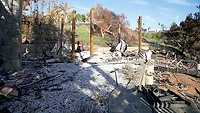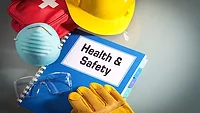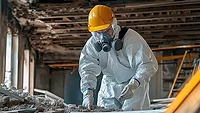Looking at Restorer Options for Environmental, Health, and Safety Certification

Photo credit: GOCMEN / iStock / Getty Images Plus via Getty Images
To certify or not to certify.
I have heard strong support of professional certification and also heard arguments that certification is not necessary. Early in my Environmental, Health, and Safety (EHS) career I worked with a group that did not believe in certification. I later learned that most industries view professional certification as an indicator of competency and level of achievement. Soon afterwards, I started seeking certifications and really haven’t stopped since!
In the restoration field, professional certification is quite literally “the name of the game.” We have very strong, well-established organizations, such as the Restoration Industry Association (RIA) and Institute of Inspection Cleaning and Restoration (IICRC), that provide many different levels and types of certifications that are applied daily at jobsites throughout the world. Most restoration professionals take advantage this and pursue multiple certifications.
However, EHS certification within the restoration industry is still relatively new and not widely understood or offered. In this article, I am going to cover some of the options for a restorer to advance their environmental, health, and safety knowledge and gain certification.
What are the options?
I like to break down EHS certification options in the Restoration Industry into three categories:
- Restoration safety certification
- OSHA accreditation
- Environmental certification
I can’t say any one of these is better than the other. I think it comes down to the individual’s existing knowledge, certifications, and the needs of the restoration company. It’s probably best to start with the easiest and most convenient certification first and then build from there. (How do you eat an elephant? One bite at a time!)

Sources: restorationindustry.org, iicrc.org
Restoration Safety Certification
I am aware of only one course dedicated to safety within the restoration industry– the Health and Safety Technician (HST) course from the IICRC. Other certifications from the IICRC and RIA certainly cover safety as part of their courses (e.g. mold, fire/smoke, trauma/crime scene). However, the HST focuses on the health and safety component, as it relates to cleaning, maintenance, and restoration work. (1)
Here are a few details worth knowing:
- There are no prerequisite classes
- It is available via live streaming and in-person classes
- There are 14-hours of instruction
- It is a required course for Master Designation
To find more information in the HST certification, please go to the resources section at the end of this article. (Note: If I have missed a safety-focused course for the restoration industry, please let me know and I can provide an update in a future article.)

Source: alabamasafestate.us.edu
OSHA Accreditation - 10-Hr and 30-Hr Training
OSHA has many courses taught through their training institute education centers and there are education centers in most states. Most classes cover specific topics, such as Respiratory Protection, Cranes, and Fall Protection. However, OSHA also has more generalized training through their Outreach Training Program that covers many different topics and serves as an introduction to safety. (See OSHA Outreach in the Resources Section.) There are two options:
- A 10-hour program intended for entry level workers
- A 30-hour program intended for workers with some safety responsibility
Here are a few details about the 10- and 30-hour training:
- They are only available through authorized outreach trainers
- They are very structured; for instance, each day is limited to 7 ½ hours of training
- There are mandatory topics and some optional topics
- Each class, upon successful completion, provides an OSHA card with no expiration
I strongly recommend researching more information through their program website or contacting an education center (Links to both are in the Resources Section.)
Environmental Certifications
The restoration industry has multiple environmental regulations that can apply to jobsites. Once a restorer starts removing, drying, or affecting building materials, there is likely an environmental regulation that affects their work. Plus, there are ‘newer’ regulations that have appeared in the past 10-15 years. Examples include the EPA’s RRP Rule (see my August 2022 article on RRP) and the OSHA Silica Dust Rule. All of this means that a Restorer needs to have a good knowledge of environmental regulations that apply to his or her work.
For the sake of keeping this article short, I will cover what I call the ‘Big Three” environmental topics for the restoration industry — Asbestos, Lead-Based Paint, and Silica Dust.

Source: in.gov
Asbestos
Asbestos continues to be a common hazard for Restorers and can be encountered in many different ways. I’ll save the details of this for another article; for now, I’ll emphasize the importance of education and certification on the subject.
Here are a few details:
- Most asbestos certification is focused on the abatement industry; however, it can provide advanced knowledge to renovators.
- Asbestos awareness training is probably the best choice for restorers and should only take 2-4 hours.
- Awareness training is best provided in-person.
I strongly recommend restoration companies contact a nearby asbestos consultant. Explain to the consultant the work you perform and have them teach a yearly course that meets the EPA/OSHA Awareness requirements and is customized for your restoration work.
Trust me, this class will clarify many misunderstandings, minimize employee exposure risk, and provide you with regulations and facts when insurance adjusters challenge the need for asbestos sampling and precautions.
Lead-based Paint
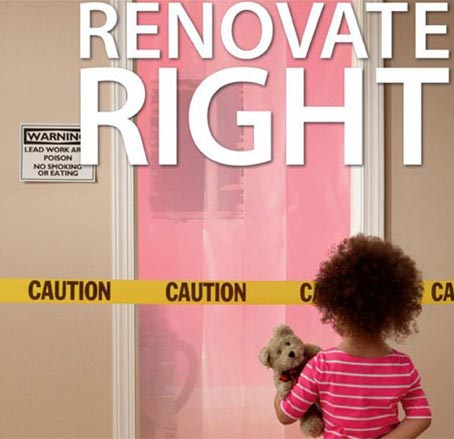
Source: epa.gov
As mentioned earlier, I covered the EPA’s RRP Rule in the August 2022 edition of Restoration and Remediation Magazine. That article has good background information and sources of training/certification. For a restorer, the only real certification option is through an authorized RRP course. Here is a basic summary:
- Complete an initial 8-hour Certified Renovator course
- Follow-up with a 4-hour refresher course every 5 years
The renovator courses are very good at explaining the specific steps for ‘lead safe work’, demonstrating how those steps are performed, and providing the paperwork necessary to document the work. Again, please refer to my August article for more details. You can also do a Google search for RRP training in your area.
Silica Dust
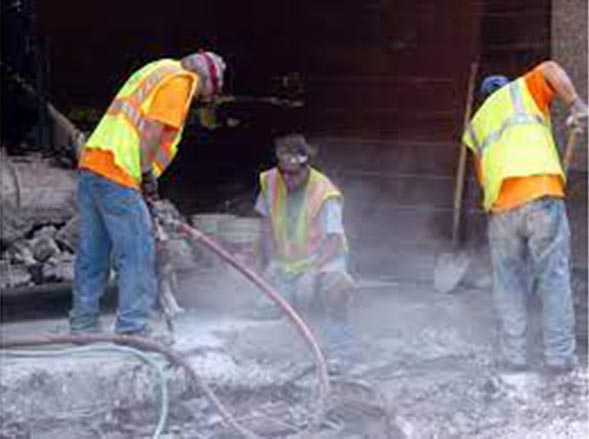
Source: osha.gov
Crystalline silica can be found in sand, stone, concrete, and mortar. In turn, these basic building materials are used to make products like concrete blocks, walls, countertops, and artificial stone. The problem comes when these materials are cut, ground, or drilled – they release a very, very fine crystalline silica dust that without protection can be breathed deep into the lungs. In turn, serious diseases can develop. (2)
Restoration companies might not generate silica dust as a common daily/weekly task, but the knowledge is worthwhile. This is an OSHA regulation, but there is no formal certification for silica dust. Instead, you can find an OSHA Training Institute Class on Silica, which is OSHA 7215: Silica in Construction, Maritime, and General Industries. (3) This course should be offered at the OSHA Training Institute in your state and take a day to complete.
Certification on any industry standard or work trade does not automatically make you more skilled or knowledgeable than others already performing the work. However, it helps you gain skills and knowledge much quicker. I believe that Environmental, Health, and Safety certifications for professionals working in the Restoration Industry are very valuable and actually become a necessity as a company grows and expands the services offered. I hope you take moment to consider the training/certifications I have mentioned and reach out to me with questions!
Reference:
- IICRC HST: https://iicrc.org/hst/
- OSHA Safety and Health Topics/Crystalline Silica: https://www.osha.gov/silica-crystalline
- OSHA 7215 Course Description: https://pe.gatech.edu/courses/osha-7215-silica-construction-maritime-and-general-industries
Resources:
- IICRC Health & Safety Technician Certification: https://iicrc.org/hst/
- OSHA Outreach Training Program Overview: https://www.osha.gov/training/outreach/overview
- OSHA OTI Education Center Locations: https://www.osha.gov/otiec/map
Looking for a reprint of this article?
From high-res PDFs to custom plaques, order your copy today!




